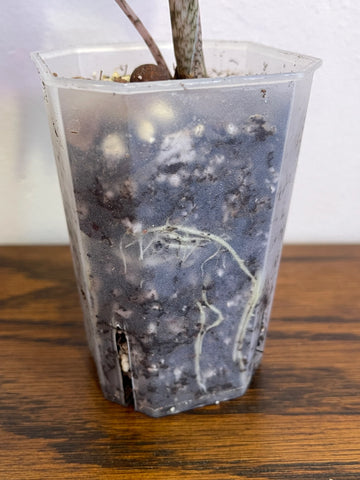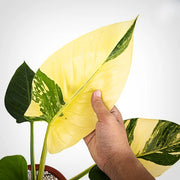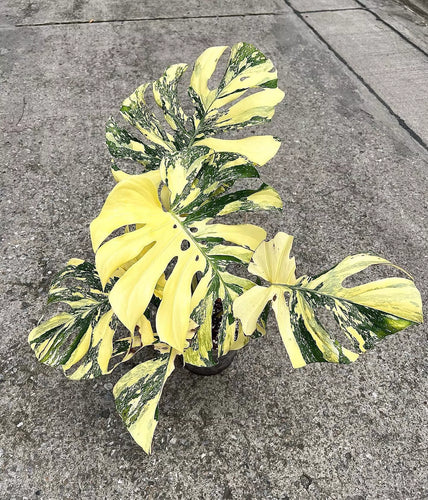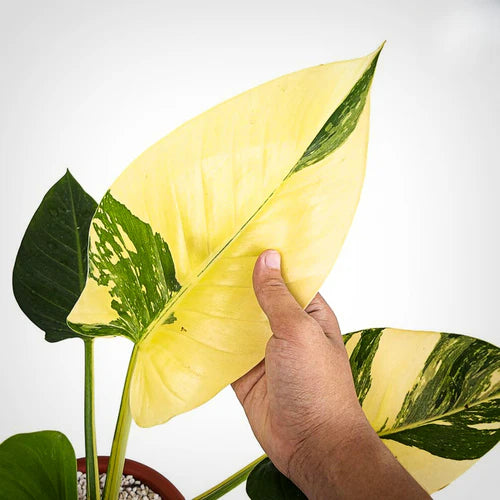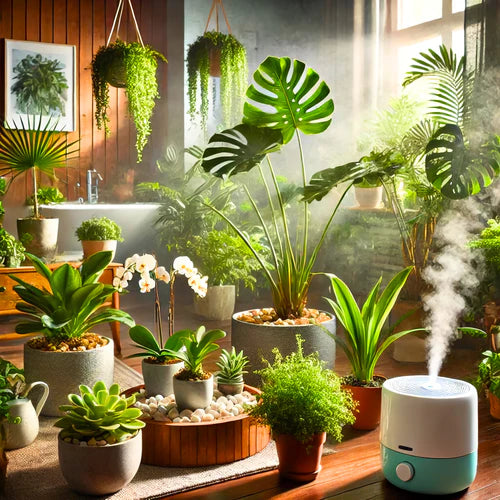How to care for Alocasia Jacklyn
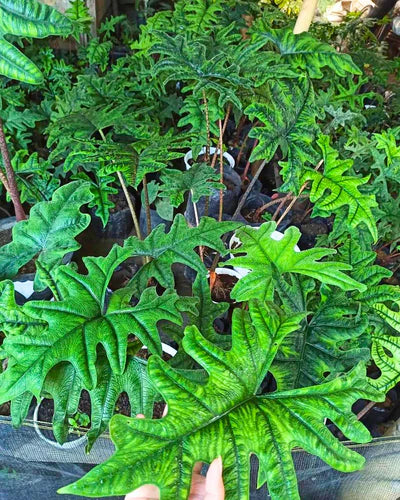
Table of Contents
- Introduction to Alocasia Jacklyn
- The Unique Features of Alocasia Jacklyn
- Optimal Growing Conditions for Alocasia Jacklyn
- Light Requirements
- Watering Practices
- Ideal Soil Composition
- Temperature and Humidity Needs
- Fertilizing Your Alocasia Jacklyn
- Pruning and Maintenance
- Propagation Methods
- Common Pests and Diseases
- Troubleshooting Growth Issues
- Alocasia Jacklyn vs. Alocasia Sulawesi and Alocasia Tandurusa
- Where to Buy Alocasia Jacklyn
- Rare Tropical Wholesale Plants at Plant Vault
- Conclusion: Ensuring the Health of Your Alocasia Jacklyn
- Alocasia Jacklyn FAQs
Introduction to Alocasia Jacklyn
The Alocasia Jacklyn, a striking member of the Alocasia family, is renowned for its distinctive foliage and tropical allure. Originating from the lush landscapes of Southeast Asia, this plant has quickly gained popularity among indoor plant enthusiasts for its unique aesthetic and relatively straightforward care requirements. This guide will provide you with comprehensive care tips to help your Alocasia Jacklyn thrive, enriching your home with its vibrant greenery.
The Unique Features of Alocasia Jacklyn
Alocasia Jacklyn is particularly prized for its large, arrow-shaped leaves that boast intricate venation and a glossy finish. The leaves' texture and the plant's upright growth habit make it a captivating addition to any indoor plant collection. Understanding the specific needs of this tropical beauty is key to maintaining its health and vibrancy.
Optimal Growing Conditions for Alocasia Jacklyn
Light Requirements
Alocasia Jacklyn thrives in bright, indirect light. A location near a window that receives filtered sunlight is ideal, as direct sun can scorch its leaves, leading to discoloration and damage. The quality of light directly influences the growth and coloration of its leaves.
Watering Practices
Water is crucial for maintaining the health of Alocasia Jacklyn, but it is vital to avoid overwatering. The plant prefers its soil to be consistently moist but not waterlogged. Water thoroughly when the top inch of the soil feels dry to the touch, reducing frequency during the winter months.
Ideal Soil Composition
The right soil mix can make a significant difference in the health of your Alocasia Jacklyn. Use a well-draining potting mix rich in organic matter. A mixture of peat, perlite, and pine bark is ideal for ensuring adequate drainage and aeration, preventing root rot.
Temperature and Humidity Needs
Alocasia Jacklyn prefers a warm, humid environment, typical of its native habitat. Maintain indoor temperatures between 65-75°F (18-24°C) and increase humidity around the plant using a humidifier or a pebble tray filled with water.
Fertilizing Your Alocasia Jacklyn
Fertilize your Alocasia Jacklyn every month during the growing season with a balanced, water-soluble fertilizer. Reduce feeding in the fall and winter when the plant's growth naturally slows.
Pruning and Maintenance
Regular maintenance is essential to keep your Alocasia Jacklyn looking its best. Remove any yellow or damaged leaves at the base to promote new growth and prevent potential disease spread. Keep the leaves dust-free to enhance photosynthesis and overall health.
Propagating Alocasia Jacklyn Through Division and Corms
Propagating Alocasia Jacklyn is an effective way to expand your collection or share this stunning plant with fellow enthusiasts. The most common method is through division, which can be done during the repotting process, typically in the spring or early summer when the plant is actively growing.
To propagate by division, carefully remove your Alocasia Jacklyn from its pot and gently brush off the excess soil to expose the root system. You'll often find that the plant has naturally separated into several clumps of roots, each with their own shoots. These clumps can be carefully divided with your hands or, if necessary, with a clean, sharp knife. Ensure that each division has a good amount of healthy roots attached to support new growth.
In addition to division, Alocasia Jacklyn can also be propagated by corms, which are bulb-like structures found beneath the soil surface. These corms can sometimes be visible when you lift the plant for division. To propagate from corms, select healthy, firm corms and plant them in a suitable potting mix designed for tropical plants. Cover the corms with soil, allowing just the top to peek slightly above the surface. Keep the soil consistently moist and place the pot in a warm, humid environment with indirect light. It can take several weeks for new growth to appear, so patience is key.
Whether you choose to propagate by division or corms, ensure each new plant is potted in a high-quality, well-draining soil mix to promote healthy root development. A mix of peat, perlite, and orchid bark is often ideal for Alocasia plants, providing the necessary drainage and aeration. After potting, keep the soil lightly moist and provide your new Alocasia Jacklyn plants with indirect, bright light and the high humidity they thrive in.
By following these steps, you can successfully propagate Alocasia Jacklyn, leading to an even more lush and vibrant plant collection.
Common Pests and Diseases
Alocasia plants are susceptible to various pests, including spider mites, aphids, and mealybugs. It's crucial to act swiftly if you notice any signs of these pests. Common indicators include tiny webs on the plant (spider mites), visible small insects or sticky residue on leaves (aphids), and cotton-like clusters (mealybugs). Treat any infestation promptly with insecticidal soap or neem oil, as Alocasia plants can suffer significant damage quickly if pests are not controlled.
Additionally, fungal infections can pose a serious threat to Alocasia plants, particularly in conditions that are too moist. Signs of fungal infections include yellowing leaves, brown spots with a yellow halo, or a white, powdery residue on the plant’s surface. Here are some steps to manage and prevent fungal infections:
- Improve Air Circulation: Ensure that your Alocasia plant is in a well-ventilated area. Good air circulation helps to reduce excessive moisture and prevents the growth of fungi.
- Adjust Watering Habits: Over-watering is a common cause of fungal infections. Water your Alocasia only when the top inch of soil feels dry to the touch. Avoid letting the plant sit in waterlogged soil, as this can promote fungal growth.
- Fungicide Treatments: If you notice signs of a fungal infection, treat the plant with a fungicide specifically suited for indoor plants. Follow the application instructions carefully to avoid harming the plant.
- Remove Infected Parts: Carefully remove and dispose of any infected parts of the plant to prevent the spread of the fungus. Clean your pruning tools after each cut to avoid cross-contamination.
- Check Environmental Factors: High humidity and poor lighting can contribute to fungal growth. Consider using a dehumidifier if your indoor environment is excessively humid, and ensure your Alocasia receives adequate but indirect sunlight.
Troubleshooting Growth Issues
If your Alocasia Jacklyn is not thriving, consider whether it may be due to improper lighting, watering, or pest issues. Adjust care practices accordingly to resolve common problems such as drooping or yellowing leaves.
Alocasia Jacklyn vs. Alocasia Sulawesi and Alocasia Tandurusa
While these Alocasia varieties share similar care needs, they display distinct differences in leaf morphology and coloration. The Jacklyn is particularly notable for its pronounced veins and darker green leaves, which distinguish it from the Sulawesi and Tandurusa. The latter two may have subtler vein patterns and lighter or different shades of green, which makes the Jacklyn a standout choice for collectors and enthusiasts seeking a striking addition to their plant collection.
Where to Buy Alocasia Jacklyn
Discover Alocasia Jacklyn for sale at our Plant Vault, where we offer a range of sizes and health options. For those interested in broader selections, explore our rare indoor houseplants collection.
Rare Tropical Wholesale Plants at Plant Vault
If you're in the market for wholesale purchases, Plant Vault specializes in providing a diverse selection of rare tropical plants, including the exquisite Alocasia Jacklyn. Our competitive pricing and commitment to quality make us the ideal choice for bulk buyers seeking rare and unique tropical plants. We ensure top-notch satisfaction for all our wholesale clients, catering to your specific needs with excellence. Browse our selection of Wholesale Rare Tropical Plants.
Conclusion: Ensuring the Health of Your Alocasia Jacklyn
Caring for an Alocasia Jacklyn is a rewarding experience that requires attention to detail and consistency in care. With the right conditions and regular maintenance, your Alocasia Jacklyn will flourish, bringing a touch of the tropics to your living space.
Alocasia Jacklyn Frequently Asked Questions
Q: Is Alocasia Jacklyn Rare?
Yes, Alocasia Jacklyn is considered a rare plant, particularly sought after for its unique foliage and texture, making it a prized addition for collectors.
Q: How Big Does Alocasia Jacklyn Grow?
Alocasia Jacklyn can reach up to 2-3 feet in height under optimal growing conditions, with each leaf potentially spanning up to 18-24 inches in length.
Q: Does Alocasia Jacklyn Grow Fast?
The growth rate of Alocasia Jacklyn can be moderate to fast, depending on care conditions such as light, water, and soil quality.
Q: Can Alocasia Jacklyn Get Too Much Light?
While Alocasia Jacklyn thrives in bright, indirect light, too much direct sunlight can scorch its leaves, causing damage and discoloration.
Q: What Does an Overwatered Alocasia Jacklyn Look Like?
An overwatered Alocasia Jacklyn will have yellowing leaves, potentially with brown, mushy spots on the roots, which are indicative of root rot.
Q: How Do I Know If My Alocasia Jacklyn Is Overwatered?
Signs include limp, discolored leaves, a damp or musty substrate, and a lack of new growth. Checking the root system for any signs of decay can confirm overwatering issues.
Q: Do Alocasia Jacklyn Like to Be Misted?
Yes, Alocasia Jacklyn appreciates humidity, which can be provided through misting. Regular misting helps maintain the humidity around the plant, mimicking its native tropical environment.

